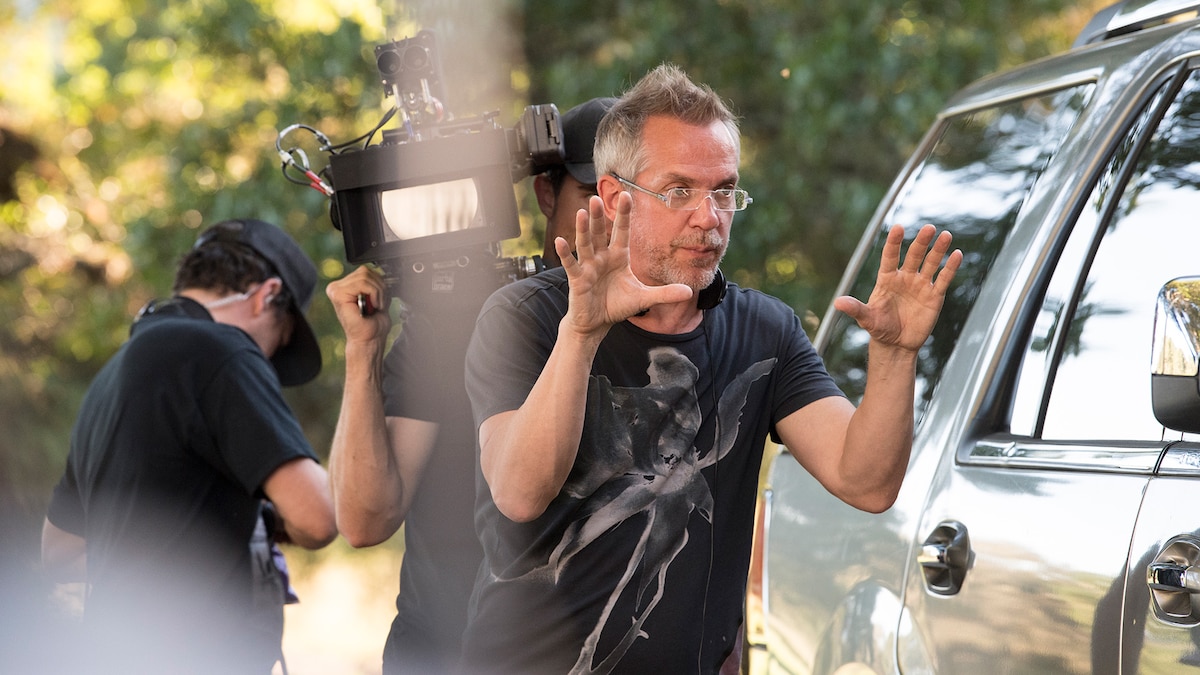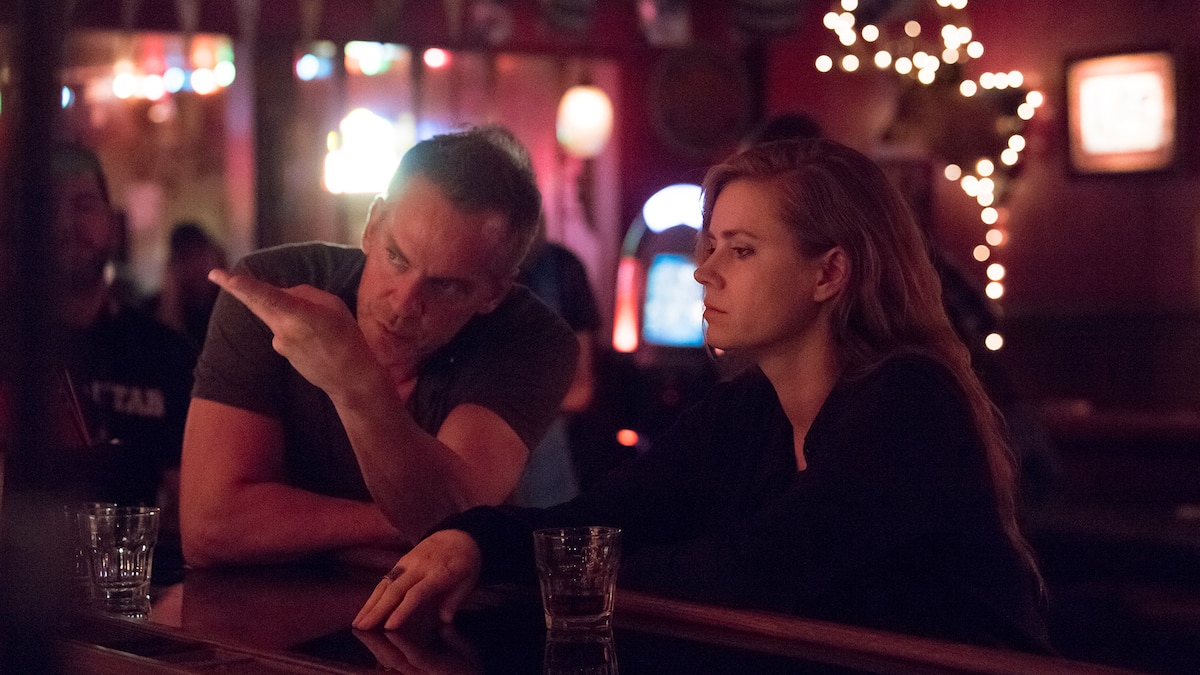The auteur describes the creative choices behind Sharp Objects’ double reveal and why Led Zeppelin was crucial in defining the series’ sound. Contains spoilers.
The final episode, specifically the final scenes of Sharp Objects, left audiences gobsmacked. Director Jean-Marc Vallée stayed true to Gillian Flynn’s novel, providing explanations in two separate sequences — pre and post-credits — as to what really happened in Wind Gap. Here, he discusses his creative choices and vision for those final moments of Camille Preaker and Amma Crellin’s saga. Contains series finale spoilers.
HBO: Why was it important to place the montage of the murders within the credits?
Jean-Marc Vallée: The whole design of the series is to have strong points of view from the main characters, mainly Camille Preaker (Amy Adams). It didn’t make sense to cut from her perspective in the moment she discovers the teeth since she wasn’t there when Amma (Eliza Scanlen) and her friends killed Natalie Keene and Ann Nash. It also didn’t make sense to cut from Amma’s perspective. As soon as she finds out Camille knows and says “Don’t tell Mama,” Amma wouldn’t be thinking of how she killed the girls.
I wasn’t a fan of showing it, and told Gillian and Marti [Noxon, creator and finale co-writer] I felt “Don’t tell Mama” is the end. But as I was cutting and listening to the rock ‘n’ roll part of Led Zeppelin’s “In the Evening,” when Robert Plant sings “I need your love,” it was a good moment to smash-cut to nothing followed by a weird sound, then show — from the storyteller’s perspective rather than the character’s — what happened. I wanted to interrupt a train of thought from the audience, who’s trying to make sense of these eight episodes and give them an explanation and the satisfaction of knowing for real.
Amma made this floor from teeth and is so into the perfection of it, like her mother is so anal about the ivory floor in her room. It made sense to have glimpses of violent images: She did it with the help of her two friends. After we see the last killing she did alone, of her new friend Mae, we go back to the first song of the series: “Come Down” by Sylvan Esso, which is a reference to The Mother. That’s when we decided to finish the credits and, at the very end, show a quick glance of the real “Woman in White” — Amma.

HBO: There’s an economical use of close-ups in the show, but the finale includes close-ups of the dollhouse, the floor and the teeth. Why wait for this moment to zoom in?
Jean-Marc Vallée: It was important to see what it was. It’s true that we rarely use a long lens: 100mm, 135mm, 200mm. We normally just get closer to the actors we’re filming with a 35mm lens in order to respect the distance and perspective, whether it’s a character getting closer to another character or an object, or moving away from it, for that matter — a turntable, a needle.
It was also important to see the floor was not completely done. Just when we thought we had some light and hope… We tried to aim for realism, truth and authenticity so when Camille focuses on the teeth and what they represent, we have to make sure it’s crystal clear. I didn’t hesitate to use a long lens to shoot the teeth, pull focus on Camille’s face, then pull focus on Amma: a teenager who’s just been caught, wondering if she should smile or not. She does.
HBO: The dollhouse is a great metaphor for horrors hiding in plain sight, like Adora’s mental disorder. What framing techniques did you use to allude to this comparison?
Jean-Marc Vallée: I wouldn’t say there was a conceptual framing technique, but the intention was to show it as much as we could in order to not attract attention or suspicion about it. Inside this horror house is this dollhouse, which Amma tries to perfect. This aim for perfection becomes a prison — and the Crellins’ destruction. Every time I could, I put the dollhouse in frame and shot it from above in order for the audience to think they could see it clearly from almost every angle. Even the characters think they can see it clearly, including Adora and Vickery.
We added a moment in “Falling” (Episode 7) of Camille’s nightmare and her curiosity about the dollhouse. I had this idea on set to have the dead girls inside so I shot every female character over green screen in order to insert them into Camille’s perspective. I put glimpses of someone moving inside the dollhouse so as Camille gets closer, we see in the foreground, a silhouette of Adora walking past. In the cutting room, I decided less was more in this mystery and kept [the silhouette] to Adora’s only. It was better to almost see someone rather than have the bodies of Ann Nash or Natalie Keene looking at her.

HBO: Your inclusion of Alice’s and Marian’s ghosts reminded me of your film Wild. Why did you decide to include them?
Jean-Marc Vallée: We’re not trying to use the language of a horror film with score or punctuation. We’re not trying to scare but naturally integrate them, like [in Episode 7] when Camille and Amma come home drunk and wasted and climb the stairs. When they go over the railing to sneak into Camille’s room, we cut to a different perspective and suddenly realize someone is there watching: Marian is at the bottom of the stairs. That green screen session, when I thought I was going to use multiple characters in the dollhouse, gave me that shot of Marian from that angle. I put her behind the wall of the living room to make it feel like she was hiding.
Also at the end of the final episode, when Camille is lying on the floor, thinking of her dead sister, she’s probably thinking she’s going to join her. But it’s the ghost of Marian who arrives. That was another idea we had on set, to go back and forth and blend present and past, while trying to be as organic as possible and not change the sound. We hear the sound of the present — of what Camille is hearing, because we’re in her head.
HBO: When we interviewed music supervisor Susan Jacobs, she mentioned how important Led Zeppelin was to you growing up. How did it feel being able to feature them so prominently?
Jean-Marc Vallée: It meant everything. I’m grateful to this band and to life; to be a kid growing up with this music that gave me the wings to dream, to do something, to feel this rock and use it in a creative way. I didn’t know I wanted to be a director and make films. But this British rock ‘n’ roll, this sound and those melodies, became everything.
Classic rock, no matter the time, will touch generations. I’m glad we could use them throughout the series to define the sound of Sharp Objects, offer it to new generations, and remind them that people can use music in their lives to escape, dream and define yourself.
Every episode of Sharp Objects is available to stream.

